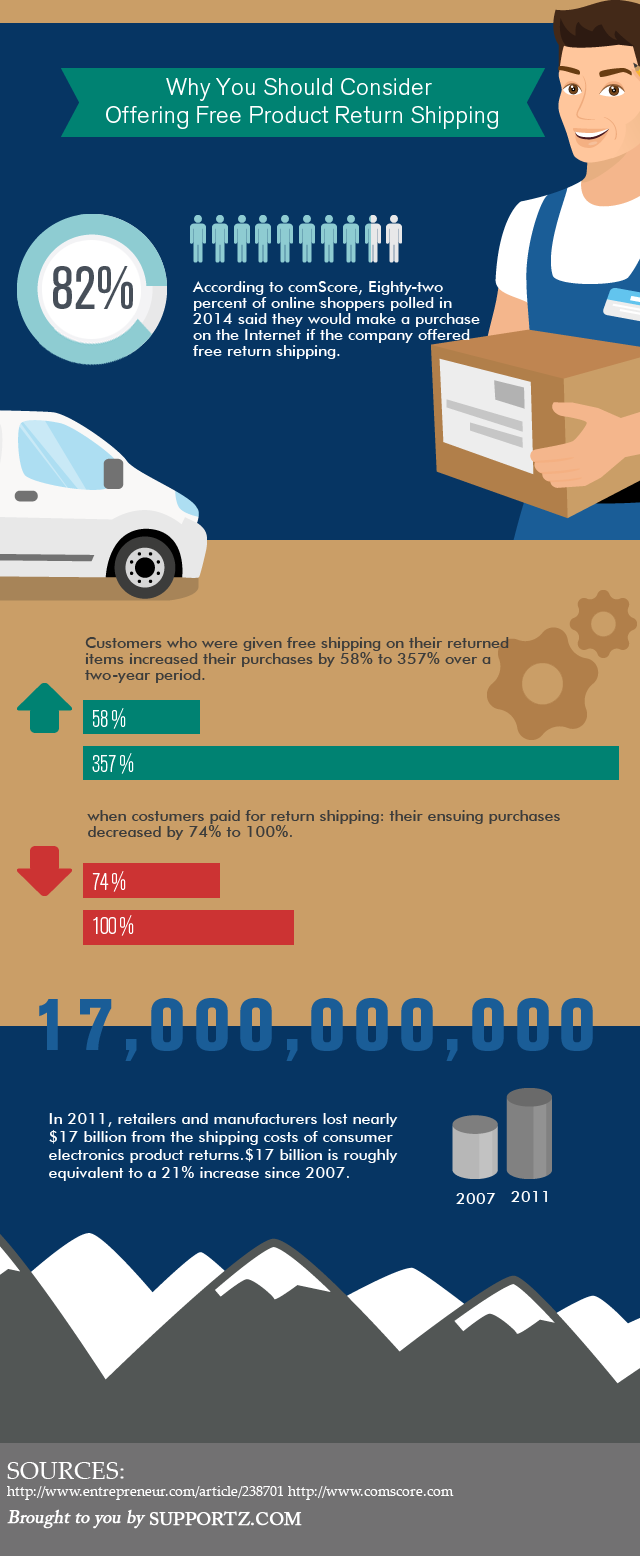
In 2011, retailers and manufacturers lost nearly $17 billion from the shipping costs of consumer electronics product returns. $17 billion is roughly equivalent to a 21% increase since 2007. Given the staggering amount of money you can potentially lose as a business owner if you offer free product returns to your customers, then why do some companies still do it?
Five Pro Tips for Selling on Ebay
Should You Offer Free Shipping from Your Online Store?
Because in a few years time, the exorbitant money that is spent by the retailer bounces back—and a whole lot of it is pumped back to the retailer who offered free shipping returns.
According to a study published in the September, 2012 issue of the Journal of Marketing, customers who were given free shipping on their returned items increased their purchases by 58% to 357% over a two-year period. Two major online retailers were studied for more than forty-nine months. Contrast this with the case when costumers paid for return shipping: their ensuing purchases decreased by 74% to 100%.
Related:How to Cross-Sell Your Online Customers
As for the equity-based return shipping rule—meaning the one who gets to pay for the return shipping is the one who is at fault—can also backfire. There are situations when it is nobody’s fault and the customer still ends up paying for the return shipping fee, thus potentially eliminating future purchases from the said retailer.
The implications of the study’s findings are pretty straightforward and telling.
In addition, the study also revealed a startling detail. The free return policy can understandably open doors for abuse. But what’s interesting is that for the two-year period after which the customers returned the product with the retailer absorbing the shipping fees, not one of them reported returning another product.
Amanda Bower, one of the authors of the study, said, “Retailers need to have a firm grip on reality, on how consumers are actually going to act, not on what retailers think consumers should do or what they consider fair.”